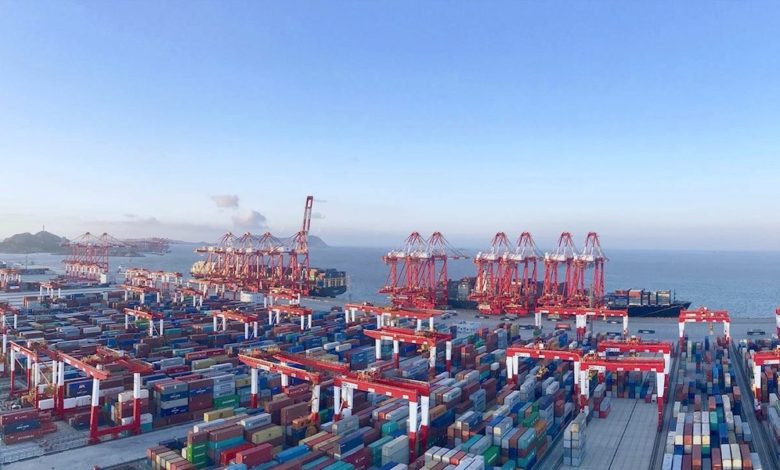Shanghai lockdown latest: Pudong eerily quiet

Landside issues in locked down Shanghai are likely to harm supply chains in the coming days rather than at the city’s myriad terminals where operations are proceeding comparatively normally compared to earlier Covid outbreaks, with China getting more savvy at keeping essential services working while still practicing a zero-Covid strategy for the general population.
On Sunday China announced Shanghai would enter a staggered lockdown, starting Monday with the eastern area of Pudong through to Friday, while the western area, Puxi, will lock down between April 1 and 5.
Logistics providers such as Dimerco Express (see details at end of article) as well as liners have been providing customers with updates on the cargo handling situation in the city.
Empty container pickup and deliveries are not permitted at Waigaoqiao and Yangshan ports through to Friday, an update from logistics firm Geodis pointed out.
Maersk reported that some depots in Shanghai remain closed from yesterday until further notice while trucking services in and out Shanghai will be severely impacted by an estimated 30%. All the warehouses in Shanghai will remain closed from Monday to Friday.
Commenting via LinkedIn, Anne-Sophie Zerlang Karlsen, who heads up operations for Maersk in Asia Pacific, said Chinese port groups had become far more adept at learning to handle Covid outbreaks over the past year.
The total containership capacity caught up in worsening port congestion globally has exceeded 14% of the fleet for the first time
“As such I see a China that has been ‘rehearsing’ for this, and I believe that the ports will continue operating – just as they are today in spite of the lock down in Pudong,” she wrote, adding that it was more important to keep an eye on factories and warehouses in the city as well as capacity on the trucker side.
The lockdown in Shanghai comes at a time where congestion at the port had been building for most of March, for all ship types, not just containerships. Data from VesselsValue shows an almost five fold increase in the number of ships waiting to load or discharge at Shanghai in the last two and half weeks.
The lockdown in Shanghai is also affecting other port cities’ Covid prevention measures. Zhoushan port in Ningbo, for instance, has implemented stricter Covid prevention and control measures whereby goods from high-risk areas cannot go into warehouses temporarily, and all the drivers from other provinces must have a negative PCR test done within 48 hours to enter the province.
The Covid outbreaks in China of late have added to the global congestion figures with analysts at Linerlytica reporting yesterday that the total containership capacity caught up in worsening port congestion globally exceeded 14% of the fleet for the first time last week.
“Despite this, freight rates are expected to weaken further, as Chinese factory output have also been affected with vessel capacity utilization levels still too low to reverse the rate declines that have been observed since January. Unlike last year, the rising congestion has not been enough to push up freight rates in the face of weak demand,” Linerlytica stated in its latest weekly report.

